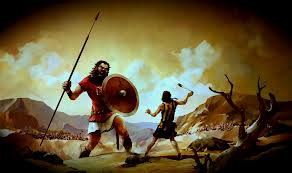FEMI TAIWO: SECRETS OF WINNING AT WORK (VI) – AUTOMATE

STRATEGY WITH FEMI TAIWO ON MONDAY
Michael is a first class chemical engineering graduate of Obafemi Awolowo University, Nigeria, and a PhD holder in same discipline from the University of Arkansas, United States. He works in a multinational energy giant in the United States.
Highly effective workers find ways to reduce time spent on grunt work by cutting out unnecessary work, simplifying and standardizing the rest. These steps set them up to automate their work processes. We now look more deeply into this last step: automate the process.
We last talked about standardization. Standardization is the bridge between simplification and automation. Standard templates for instance simplify work and are easy to automate. If you simplify your work and are looking to automate, you will standardize.
Standardization finds its maximum advantage in automation. The end of standardization is automation; for automation is where standardization fulfills its potential, it is where standardization delivers on its promises. Automate your work whenever possible. The time and effort expended to automate pays in spades.
If a spreadsheet can do the job, stop using a calculator. If you can write a program for it, please do. Never do for yourself what some lines of codes can do for you. Let the 0’s and 1’s do the job. Invest in producing those codes. The investment is well worth it. If you can’t write a program, ask someone to do it for you. The message here is not that computer programs can solve all your work issues but that you should automate whenever practical.
In fact, the best example of automate I can think of comes not from bits and bytes but from an illustration in Robert Kiyosaki’s Rich Dad, Poor Dad. Two men, the story goes, won a contract to supply a nearby village with potable water. One man got to work immediately by carrying buckets to the river with his sons to supply the village. The other built a pipeline. At the beginning, the first man was making deliveries and earning money and stressing himself and his sons out in the process while the second man earned nothing. In fact, the second man was initially in debt because he had to finance the pipeline’s construction. As soon as the pipeline was finished though, the first man could no longer compete. 100 sons carrying buckets 24hrs a day cannot accomplish what a pump and a pipeline can. The second man automated the process. He got much richer in the process and the village is assured of a reliable water supply. Everybody wins.
Build a pipeline for your repetitive tasks. Have an assembly line of standard templates for every routine work you do; put them on a conveyor belt and watch the process crank out standard quality products. There is no other way to establish a reputation of creating dependable goods and services than to have a simplified standard work process on autopilot.
Be careful before conceding that some work can never be automated. Some scientists a few years ago declared that the computer can never do some tasks e.g. driving a car. Today, we have driverless cars. That’s right, cars that drive themselves. There are robots now that do advanced surgery – and they do it better than surgeons! The Lexus car factory in Japan is automated: machines build machines. Each day we find new examples of how technology is breaking new grounds.
Don’t get me wrong: I am not saying every human activity can be automated. What I am saying is that you should challenge yourself to look critically at your work and automate as much as possible. You want the computer or pipeline or conveyor belt to do what it can do so you can do what only you can do. That’s how to win at work. The next articles will now focus on how to do what you can do (that no code can). In other words, the non-grunt part of work.
***
Subscribe free to JarusHub for more career and life tips
[subscribe2]
Established in March 2013, JarusHub is a Nigerian information hub with focus on career and management. It is rated Nigeria's most authoritative destination for online career resources. It parades an array of Nigerian professionals who share their career experiences with a view to bridging career information gap and mentoring a generation to success. Whether you're a student, a recent graduate or an established professional, or even an executive, you will always find something to learn on JarusHub. All enquiries to jarushub@gmail.com or 0808 540 4500. Facebook: www.facebook.com/jarushub; Twitter: @jarushub or @mcjarus.
Career Q&A with Jarus: Oil & gas career, poor CGPA
September 17, 2023What is Career Counselling? How to choose the Right Career?
October 24, 2022Career Advice: Play to Your Strength
March 6, 2022







Powerful. Thanks Dr. Michael for this.
This series should be compounded into a book; maybe together with other series.
This is a very encouraging article and anyone that understand this before still need more rethink as the DR has spoken, using a simple and well understanding story. Thanks Dr FM
Thanks always for your information really of great help